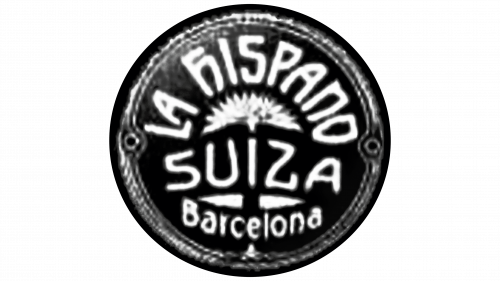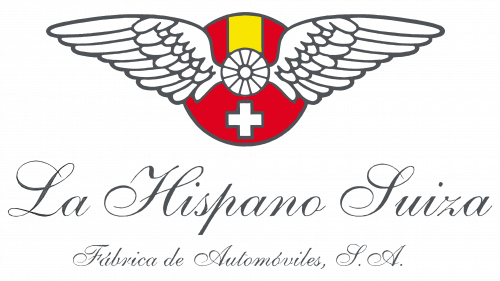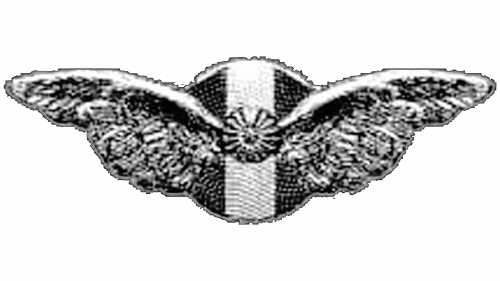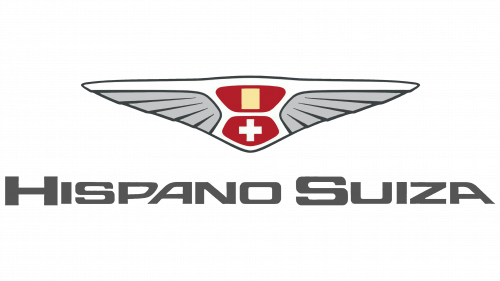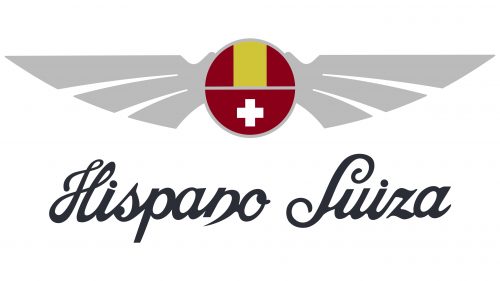The Hispano-Suiza logo is elegant and patriotic. It combines the company’s two areas of work: automotive and aviation. Strong wings give the brand flight. The manufacturer has maintained its position and masterfully rose from the ashes.
Hispano-Suiza: Brand overview
Founded in 1904 by Marc Birkigt, Damian Mateu, and Francisco Seix in Barcelona, Hispano-Suiza pioneered the automobile industry, especially in producing luxury cars. The company was instrumental in introducing technologies that were advanced for their time, such as pioneering 4-wheel braking systems. The company expanded its production facilities in France and Spain to meet the growing demand. After 1923, the company’s French division operated with a degree of independence.
The brand was not limited to passenger cars but, at various periods, diversified into aircraft engines, commercial trucks, and armaments. After World War II, in 1946, the Spanish headquarters transferred its automotive divisions to the Spanish automobile manufacturer Enasa, reorienting the French division towards aerospace. Eventually, in 1968, the French subsidiary was incorporated into the aerospace company Snecma, now known as Safran.
The Hispano-Suiza brand remained unclaimed for many years, capturing the imagination but not the market share. It wasn’t until the 2010s that attempts were made to revive the brand, targeting the high-end electric car market. Although the company’s current state is a far cry from its heyday in the early 20th century, when it was recognized as the manufacturer of the most sophisticated and respected cars in Europe, the Hispano-Suiza name still evokes a sense of nostalgia and technical prowess.
Meaning and History
1904 – 1907
The first logo of Hispano-Suiza featured a black circle. This choice symbolized the prestige of the cars and the successful collaboration between the two countries involved in creating the company. The smooth lines on the emblem emphasized a commitment to harmony and perfection, reflecting the company’s philosophy of creating flawless machines.
These cars quickly became popular, achieving success on the third attempt. The black emblem indicated the high-class nature of the vehicles, favored by high-ranking officials and those close to the king.
The inscriptions on the emblem were straightforward: the company name and location. The brand name Hispano-Suiza came from the Spanish names for Spain and Switzerland. This represented the international cooperation at the foundation of the company. A Swiss engineer was responsible for implementing engineering ideas and overseeing production, while Spanish businessmen provided financing and support.
1907 – 1914
The logo of Hispano-Suiza first featured the company’s mascot, a stork. This symbol represented the automotive production and the company’s work in aviation engines. The French division of the company developed and produced aviation engines, which gained widespread recognition during World War I. These engines were installed on French fighter planes, making the company famous in military aviation.
Georges Guynemer, a French aviation ace from Alsace, painted the image of a stork on his planes, symbolizing his province. The entire squadron, Les Cigognes (The Storks), gradually used this symbol. The storks became a recognizable emblem associated with the courage and skill of French pilots.
After Guynemer’s death, Marc Birkigt, the founder of Hispano-Suiza, honored the famous pilot’s memory. He commissioned the image of the stork for their cars, which were equipped with the same aviation engines. Sculptor François Bazin created a figurine of a stork, depicted with its head down and wings folded, symbolizing mourning.
The stork became an important element on the hoods of Hispano-Suiza cars, highlighting the connection between the company’s automotive and aviation industries. This symbol emphasizes the brand’s innovative spirit and pursuit of excellence.
1914 – 1936
The Hispano-Suiza logo featuring a wheel with wings, the symbol of Hermes, embodied the theme of transport and speed. This emblem highlighted the company’s leadership in the automotive industry. Hispano-Suiza pioneered advanced ideas and inventions that many other car brands adopted by purchasing the company’s patents.
The wheel was depicted against the backdrop of symbols from Spain and Switzerland, including flag colors and a white cross. This design element emphasized both countries’ international collaboration and joint efforts in car manufacturing. At the bottom of the logo, a beautiful cursive inscription displayed the company name and business, adding elegance and prestige to the brand.
The Hispano-Suiza logo represents the company’s most elegant and famous model, the Hispano-Suiza H6. This car became a symbol of luxury and technical perfection. The H6 model stood out for its high-quality craftsmanship and innovative technical solutions, making it a benchmark in its class.
1917 – 1936
The 1917 symbol looks like a plane soaring over a road. The circle in the logo represents the earth, and the winged figure emphasizes the company’s connection to the aviation industry and the use of aviation engines in their cars. This element reflects the constant motion and drive for development characteristic of Hispano-Suiza products.
The logo’s symbolism echoes the colors of the French flag. France played a key role in the company’s history, as the first Hispano-Suiza aviation engines were developed there. After the war, Marc Birkigt, the company’s founder, moved to France, where he continued to create cars, incorporating advanced engineering solutions.
2010 – 2019
In 2010, designer Erwin Leo Himmel presented a modern version of the Hispano-Suiza car at a Geneva show. This event marked a significant milestone in the brand’s history, reviving the legendary name for a new century. A refreshed logo was introduced during the presentation, retaining key elements from past symbols while giving them a modern look.
The new logo featured outspread wings, symbolizing speed and a drive for progress, which had always been characteristic of Hispano-Suiza. The center of the emblem included elements representing the two countries that played important roles in the company’s history. The top of the logo displayed a part of the Spanish flag, symbolizing the Spanish origin and the contribution of Spanish businessmen to the company’s development. The lower part incorporated elements of the Swiss flag, indicating the Swiss engineer’s contribution and leadership in the production process.
2019 – 2021
In 2019, a descendant of the company’s founders initiated a new effort to revive the legendary Hispano-Suiza brand. The new electric sports car featured a unique, modern logo that reflected a commitment to innovation while preserving traditions.
The logo had metallic wings, symbolizing speed and progress, qualities always associated with Hispano-Suiza cars. At the center of the emblem was a red circle, resembling an electric battery, symbolizing the company’s shift towards environmentally friendly technologies and electric power.
A white stripe divided the central image, highlighting the connection between the two countries involved in the company’s creation. Each half of the circle contained the emblem of one of these countries, showcasing Spain and Switzerland’s international collaboration and contributions to the brand’s development. The white border surrounding the logo added a sense of lightness and airiness, reflecting the dream and hope for future renewal and success.
2021 – today
The Hispano-Suiza logo features uniquely shaped gray wings, remnants of the stork that once symbolized the brand. These wings represent flight and speed, reflecting the company’s history in aircraft engine development since 1913 and its production of fast cars. A circle, divided into red and yellow segments representing the Spanish national flag, contains a white cross. Below, the company name appears in a neat italic font.
The wings signify the company’s enduring association with aviation and speed. The red and yellow colors highlight the brand’s Spanish heritage. The white cross adds symbolism of purity and tradition. The italicized font of the company name adds an elegant touch, reflecting the brand’s high quality and elite status.
The gray wings evoke the essence of flight and speed central to Hispano-Suiza’s legacy. The red and yellow circle emphasizes the company’s Spanish origins and adds vibrancy. The white cross within the circle introduces a sense of integrity, reinforcing the brand’s reputation.
The italicized font at the bottom enhances the logo’s elegance, adding sophistication and aligning with the brand’s image of luxury. The neat appearance of the text ensures the brand name is distinguished and memorable.


